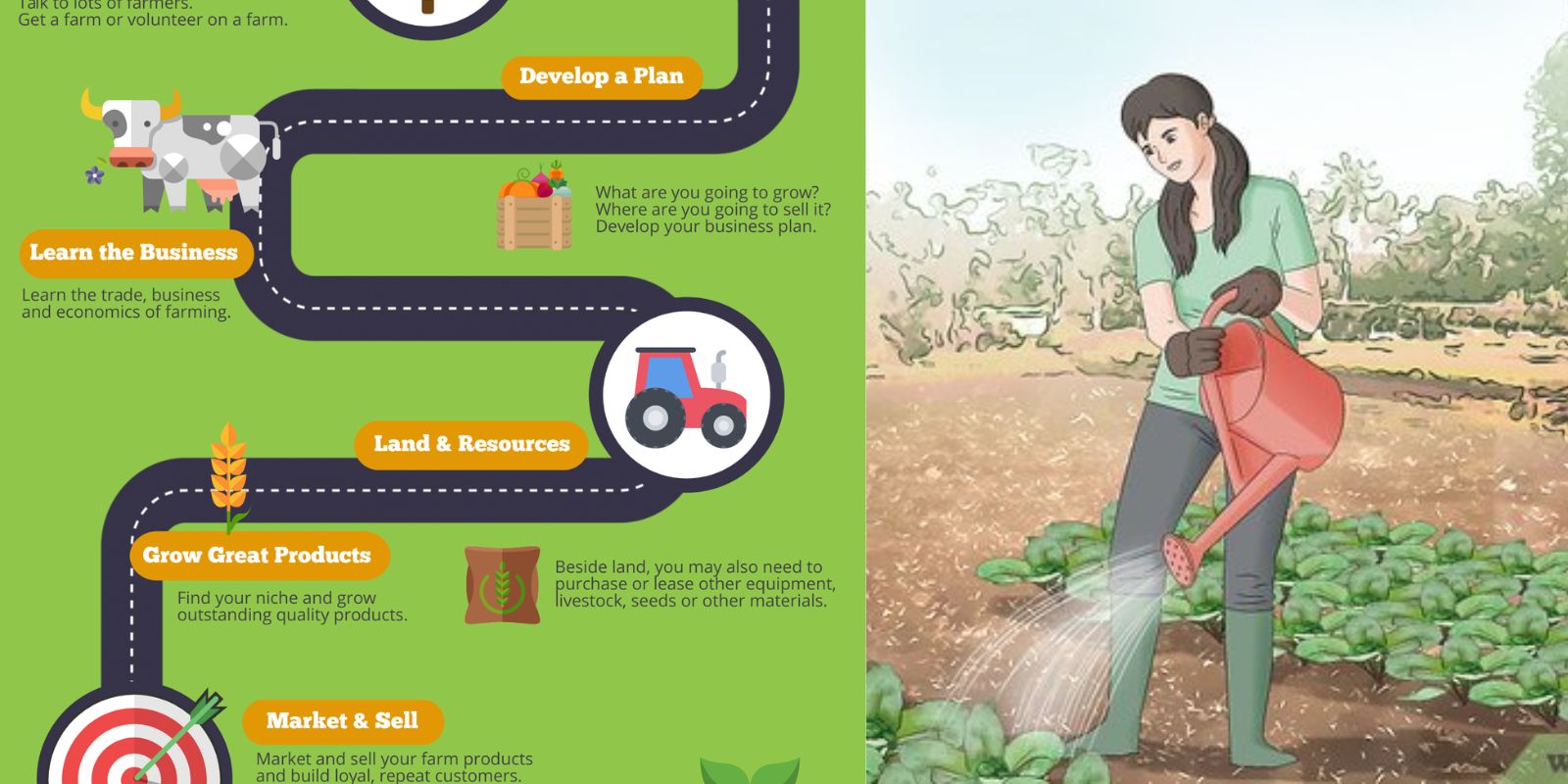Farming is not just an occupation; it’s a way of life that connects us deeply to nature, provides sustenance for communities, and offers a rewarding sense of achievement. However, becoming a successful farmer requires more than passion—it demands knowledge, planning, and adaptability. This guide provides an in-depth roadmap for aspiring farmers to navigate the complexities of agriculture and thrive in their farming journey.
1. Define Your Farming Goals
Every successful venture starts with a clear vision, and farming is no exception. Defining your farming goals is the foundation upon which your agricultural journey is built.
- Identify Your Focus: Decide whether you want to grow crops, raise livestock, or both. Consider factors like personal interest, market demand, and available resources.
- Determine Scale: Will you start with a small backyard farm, a mid-sized plot, or large-scale commercial farming? Your goals should align with your capacity and ambitions.
- Set Milestones: Break your long-term vision into smaller, achievable goals. For instance, planting a specific number of trees in year one or reaching a target yield by year three.
2. Conduct Thorough Research
Knowledge is power in farming. Before planting your first seed or buying livestock, arm yourself with information.
- Understand Your Region: Study the soil types, climate, and weather patterns in your area. Learn which crops or livestock are best suited to these conditions.
- Explore Market Trends: Investigate what products are in demand locally and nationally. Growing what sells is as important as growing what thrives.
- Learn Best Practices: Read books, watch tutorials, or take courses on farming techniques. Topics like organic farming, pest management, and sustainable practices are invaluable.
3. Develop a Solid Business Plan
A successful farm operates like a well-planned business. Crafting a robust business plan will help you manage resources effectively and set realistic expectations.
- Financial Planning: Outline your startup costs, including land, equipment, seeds, and fertilizers. Plan for recurring expenses like water, labor, and maintenance.
- Resource Allocation: Decide how to allocate land, water, and manpower efficiently.
- Marketing Strategy: Determine how you’ll sell your produce or livestock. Explore direct-to-consumer models, farmer’s markets, or wholesale options.
4. Invest in Quality Soil Management
Healthy soil is the cornerstone of productive farming. Proper soil management practices ensure high yields and sustainable farming.
- Test Your Soil: Use soil testing kits to measure pH levels and nutrient content. Amend your soil with organic matter if necessary.
- Compost and Mulch: Enrich your soil with compost made from kitchen waste or farm residues. Use mulch to retain moisture and prevent weeds.
- Practice Crop Rotation: Alternate crops seasonally to prevent soil depletion and reduce pests.
5. Master Water Management
Water is a precious resource in farming, and efficient usage is critical to success.
- Install Irrigation Systems: Drip irrigation is cost-effective and water-efficient. Sprinkler systems are suitable for larger fields.
- Harvest Rainwater: Collect rainwater in tanks to reduce dependence on municipal supplies.
- Schedule Watering Wisely: Water crops during cooler parts of the day, such as early morning or late evening, to minimize evaporation.
6. Embrace Sustainable Practices
Modern farming is moving towards eco-friendly methods that are good for both the environment and the farmer’s pocket.
- Reduce Chemical Use: Replace chemical pesticides with natural alternatives like neem oil or insect-repelling plants.
- Biodiversity: Plant a variety of crops and incorporate cover crops to promote ecosystem health.
- Composting: Recycle farm waste into nutrient-rich compost to reduce dependence on synthetic fertilizers.
7. Leverage Technology
Technology can significantly enhance productivity and reduce labor. From modern machinery to data-driven insights, today’s tools make farming smarter.
- Farm Management Apps: Use apps to monitor crop health, track weather, and manage tasks.
- Precision Farming: Employ sensors and GPS technology to optimize planting, watering, and harvesting.
- Machinery Investments: Invest in tools like seeders, tractors, and harvesters based on your farm’s scale.
8. Build a Support Network
No farmer thrives in isolation. Building a community of support can provide invaluable advice, resources, and encouragement.
- Join Local Farming Groups: Collaborate with other farmers to share knowledge and resources.
- Attend Workshops and Seminars: Stay updated on the latest trends and technologies in agriculture.
- Mentorship: Find experienced farmers who can guide you through challenges.
9. Monitor and Adapt
Farming is a dynamic process that requires constant attention and flexibility.
- Track Performance: Use journals or apps to document yields, expenses, and any challenges you face.
- Learn from Failures: Not every season will be perfect. Analyze what went wrong and adjust your strategies.
- Stay Informed: Keep up with market trends, climate predictions, and innovations in farming.
10. Focus on Marketing and Branding
Selling your produce effectively is as important as growing it. Create a strong brand to attract customers and build loyalty.
- Leverage Social Media: Use platforms like Instagram and Facebook to showcase your farm and products. Share updates, farming tips, and success stories to engage your audience.
- Direct Sales: Sell fresh produce at farmer’s markets or through subscription boxes.
- Collaborate: Partner with local restaurants, grocers, or cooperatives to expand your reach.
Conclusion: Cultivating Your Farming Future
Farming is a fulfilling journey that blends hard work, creativity, and a connection to the earth. By setting clear goals, staying informed, and embracing sustainable practices, you can build a successful farm that not only supports your livelihood but also contributes to the well-being of your community.
💬 What’s your favorite farming tip? Share it below and inspire others!
#FarmingSuccess #SustainableAgriculture #GrowYourFuture #FarmLife #GardeningGoals #BackyardFarming

